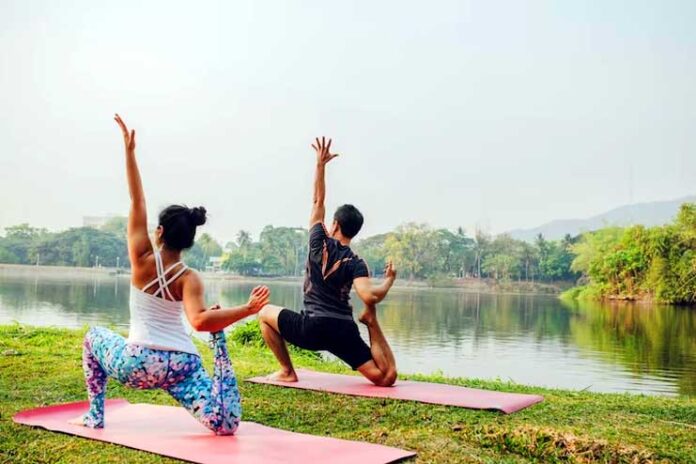Affiliate Disclaimer
Some links in this article are affiliate links. We may earn a small commission if you make a purchase through these links, at no extra cost to you. We only recommend products we find useful to our readersYoga has quickly transformed from a specialized practice to a worldwide fitness craze, mesmerizing millions with its life-changing potential. You can appreciate yoga’s appeal regardless of your fitness experience. Yoga is a holistic approach to well-being that appeals to people of all ages and fitness levels since it feeds the body, mind, and soul in addition to physical postures and stretches. Yoga offers the ideal balance in today’s fast-paced world, when mental health is equally important to physical health.
However, why is yoga taking the fitness world by storm? The arguments for its popularity are substantial, ranging from its potent stress-relieving properties to its capacity to increase strength and flexibility. This article explores six significant factors contributing to yoga’s popularity in the fitness industry and presents a fresh perspective on fitness and wellness.
1. Mind-Body Connection

Stress Reduction and Mental Clarity:
Yoga’s emphasis on the mind-body link is a potent remedy for stress and mental clutter in today’s busy lives. Combining movement and breath creates a calm environment to release tension and achieve mental clarity. Yoga’s attentive approach promotes present-moment awareness, which eases mental stress.
Yoga’s focus on deliberate breathing and relaxation methods soothes the nervous system and fosters a profound sense of balance and calm. By combining physical postures, breathwork, and meditation, yoga improves mental sharpness, builds resilience, and lowers stress.
Yoga encourages relaxation and lessens the adverse effects of chronic stress by activating the feelings of relaxation as you move through each posture. This breathing and movement alignment creates peace by allowing the body and mind to enhance concentration, judgment, and general cognitive function.
Related Article: 10 Yoga Poses for Heart Health – Get that Blood Flowing Properly
2. Physical Benefits
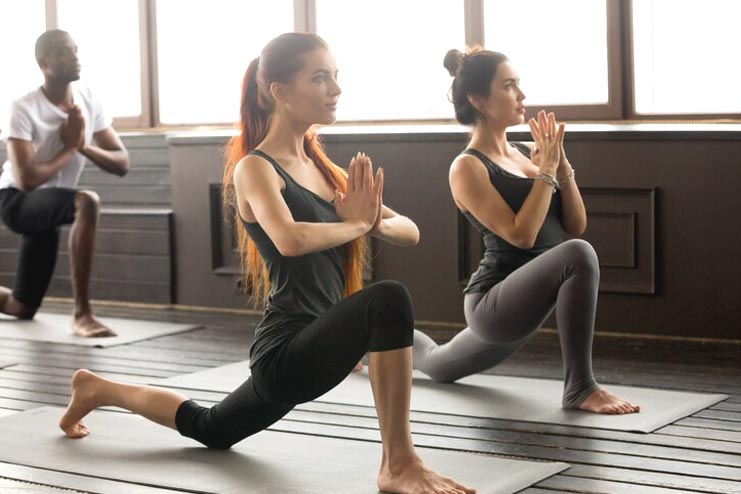
Flexibility and Balance Enhancement:
Renowned for its all-encompassing approach to health, yoga provides a path to increased balance and flexibility. The wide variety of yoga asanas, or poses, lengthens and stretches muscles, progressively increasing the range of motion available to the body.
People who practice regularly report feeling more flexible because their bodies can adjust to different types of poses. In addition, yoga’s emphasis on balance develops stability through activating the core muscles and improving proprioception. Your muscles are stretched during yoga positions. They can facilitate improved movement and lessen fatigue and stiffness.
Yoga delivers noticeable benefits quickly, regardless of experience level. Research shows that flexibility can increase by up to 35% in eight weeks. Through carefully designed movements, yoga enhances the body’s physical abilities, progressively improving strength and flexibility. The smooth transitions between poses, such as the warrior stance and tree pose, create a harmonious balance of flexibility and strength.
Yoga’s emphasis on flexibility and strength helps build a robust and balanced body. This holistic approach enhances the practice and empowers people to move more quickly, agilely, and resiliently in daily life. Yoga enthusiasts can expect steady physical benefits, such as building a robust and graceful physique.
Strength and Muscle Toning:
Yoga is a powerful force in strength and muscle training, even beyond its reputation for tranquility. Sustained muscle engagement is necessary to hold yoga poses, which turns deceptively peaceful poses into effective workouts.
Major muscle groups are engaged in asanas, including the plank, downward dog, and chaturanga, which promote strength development throughout the body. Many yoga postures demand you to bear your body weight in challenging ways, such as downward dog, where you must balance on one leg, or tree pose, where you must support yourself with your arms.
Maintaining these yoga poses improves muscle blood flow, increasing strength, stamina, and balance. These poses’ isometric qualities help to develop lean muscle mass and muscle endurance, shaping the body to mirror the strength developed from the skillful practice of yoga.
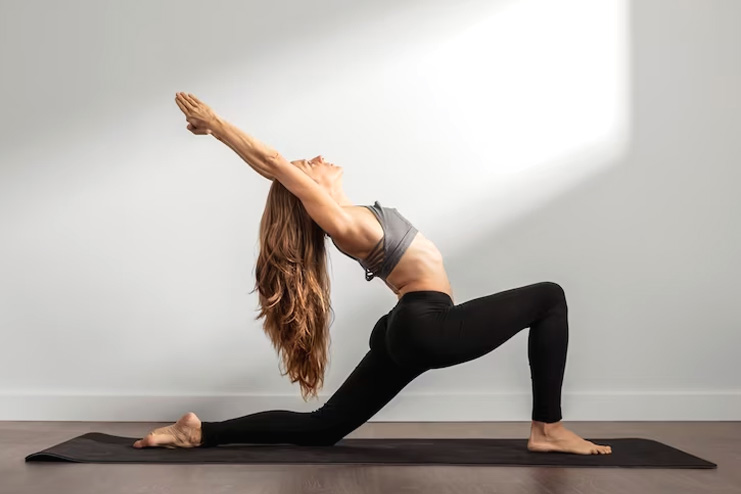
Pain Alleviation and Injury Prevention:
Yoga is a healing salve for the body, strengthening barriers against possible harm and relieving chronic discomfort. One way that yoga poses help alleviate tension in the muscles and joints is by purposefully using stretching and gentle motions.
Thus, common causes of discomfort, including tightness and stiffness, are relieved. In addition, yoga’s focus on alignment and body awareness lowers the risk of injury by encouraging conscious movement.
Yoga’s ability to create a link between movement, breath, and the body’s inherent mechanics makes it an effective tool for preventing injuries, emphasizing the practice’s importance as a whole physical wellness regimen.
Related Article: Best Yoga at Your Desk – 10 Convenient Office Yoga Poses
3. Health and Wellness
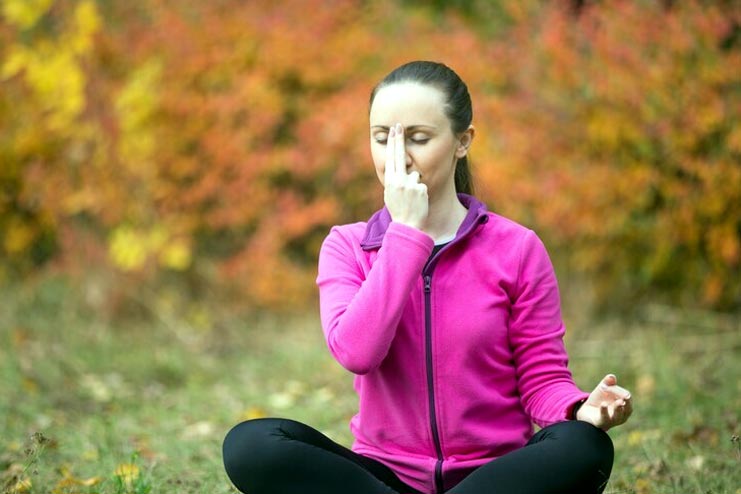
Improves Respiratory Health:
Yoga’s profound influence on respiratory health stems from its emphasis on mindful breathing practices. Pranayama, a transformative technique of controlled breathing that serves as a strong catalyst for increasing lung capacity, is the foundation of yoga practice.
By employing methods like deep diaphragmatic breathing and alternate nostril breathing, practitioners can enhance their breathing and promote a more effective exchange of oxygen in the lungs.
This methodical technique fortifies the respiratory system and acts as a doorway to serenity. Breathing regularly and mindfully opens channels for developing calmness and mindfulness, establishing a positive relationship between mental health and breathing.
In addition to strengthening their respiratory health, pranayama set out to harness the transforming potential of conscious breathing, which promotes a calm and balanced state of being.
Heart Health and Blood Circulation:
Yoga protects cardiovascular health by promoting a mutually beneficial interaction between the heart and general well-being. Yoga poses and deliberate breathing creates a dynamic interaction that awakens the circulatory system. Poses that increase blood flow, such as fish and cobra, support good circulation throughout the body.
Movement and breath control work together to control blood pressure and lower the risk of cardiovascular problems. Yoga becomes a cardiovascular ally, strengthening the heart and enhancing blood flow to promote long-term energy.
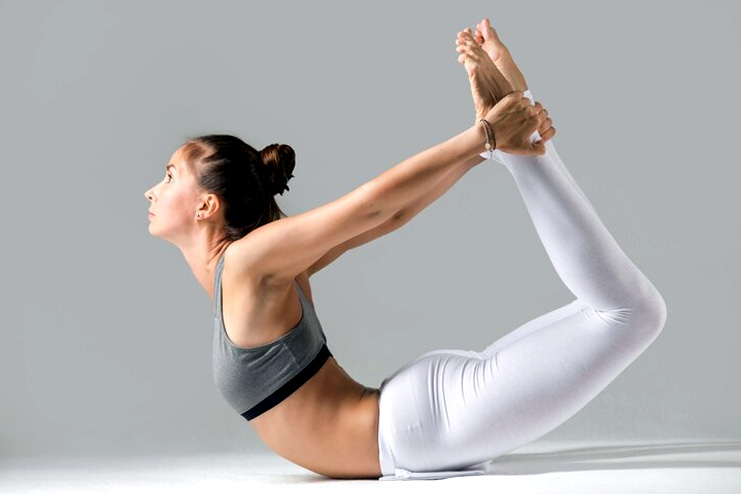
Supports Mental Health and Emotional Well-being:
Beyond the physical sphere, yoga’s comprehensive advantages encompass mental well-being and emotional balance. Yoga is a potent technique for stress, anxiety, and depression management because it unites movement, breathing, and mindfulness. Whether through conscious movement or guided meditation, the contemplative elements of yoga practice help to create a calm and peaceful mental environment.
It promotes emotional well-being and provides a comprehensive approach to mental health when combined with producing endorphins during physical activity. Yoga’s capacity to lower cortisol levels—a hormone linked to stress—emphasizes its transformative potential as a discipline that uplifts the mind and soul and nourishes the body.
Related Article: 11 Best Yoga Bolster Experience Comfort
4. Adaptability and Inclusivity
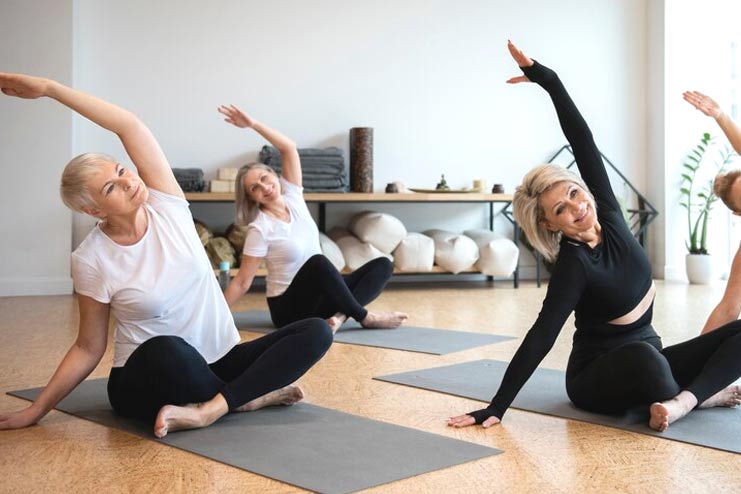
Accessibility for All Ages and Fitness Levels:
One of yoga’s most impressive features is its intrinsic flexibility. It’s an inclusive practice that people of all ages and fitness levels can do. Yoga’s adaptability comes from its many poses and variations, enabling practitioners to customize their practice to fit their needs and capabilities.
For anyone looking to start the journey towards their physical and emotional well-being, yoga provides a peaceful starting place, regardless of age, experience level, or lack thereof. Yoga’s adjustable poses allow practitioners to advance at their rate, creating a welcoming atmosphere that welcomes people of all ages and fitness levels.
Versatility in Practice Styles and Settings:
The diversity of practice approaches offered by yoga demonstrates its inclusivity by guaranteeing a suitable method for everyone. Yoga’s range of styles, from Vinyasa’s energetic flow to Yin’s contemplative stillness, accommodates a variety of goals and tastes.
Furthermore, yoga practitioners welcome the flexibility to practice in various environments, demonstrating the discipline’s versatility outside of a studio. Yoga’s portability makes it easy to incorporate into daily life, whether in a busy city, a calm park, or a quiet room at home. This flexibility fits different lifestyles and supports yoga’s status as a widely available technique for promoting well-being, regardless of one’s environment or situation.
Related Article: Yoga for Brain Power – 10 Poses to Boost Your Memory and Willpower
Conclusion: Embracing Yoga for Holistic Fitness

There’s no denying yoga’s significant effects on overall health and well-being. Beyond traditional exercise regimens, yoga promotes mental clarity, emotional resilience, and increased strength and flexibility. It provides a path of transformation that unifies mental, emotional, and physical components while encouraging a state of harmonious equilibrium. In the face of the intricacies of contemporary existence, practicing yoga becomes an enduring source of health and energy.
I invite readers to take this enlightening trip and discover yoga’s many advantages to body, mind, and soul. By including yoga as a mainstay in your exercise regimen, you set yourself up for a more colorful, harmonious, and satisfying life.
-
Dec 2023Written by Ankita
-
Nov 2024Edited by Ankita
References
- https://goldcopd.org/world-copd-day-2024
- https://www.nhlbi.nih.gov/health-topics/education-and-awareness/copd-learn-more-breathe-better/copd-awareness-month
- https://www.awarenessdays.com/awareness-days-calendar/world-copd-awareness-day-2024
- https://www.pacehospital.com/world-copd-day
- https://www.copdfoundation.org/Take-Action/Get-Involved/COPD-Awareness-Month.aspx
- https://www.nhlbi.nih.gov/health/copd
- https://www.who.int/news-room/fact-sheets/detail/chronic-obstructive-pulmonary-disease-(copd)
- https://my.clevelandclinic.org/health/diseases/8709-chronic-obstructive-pulmonary-disease-copd
- https://www.webmd.com/lung/copd/what-is-a-copd-flare-up
- https://medlineplus.gov/ency/patientinstructions/000698.htm
- https://www.breztri.com/copd/flareups
- https://www.lung.org/lung-health-diseases/lung-disease-lookup/copd/living-with-copd/prevent-flare-ups
- https://www.umms.org/bwmc/health-services/pulmonary-disease/copd/symptoms-triggers/common-triggers
- https://www.healthline.com/health/avoiding-copd-triggers
- https://www.healthline.com/health/copd/steps-for-managing-copd-flare#seeking-help
- https://www.healthline.com/health/copd/how-to-prevent-copd
- https://health.clevelandclinic.org/copd-exacerbation
- https://pmc.ncbi.nlm.nih.gov/articles/PMC9528742
- https://www.lung.org/lung-health-diseases/lung-disease-lookup/copd/finding-support
- https://www.copdfoundation.org/COPD360social/Community/Get-Involved.aspx
- https://www.copdfoundation.org
- https://www.lung.org/lung-health-diseases/lung-disease-lookup/copd/finding-support
- https://goldcopd.org
- https://goldcopd.org/world-copd-day-2024
In this Article















